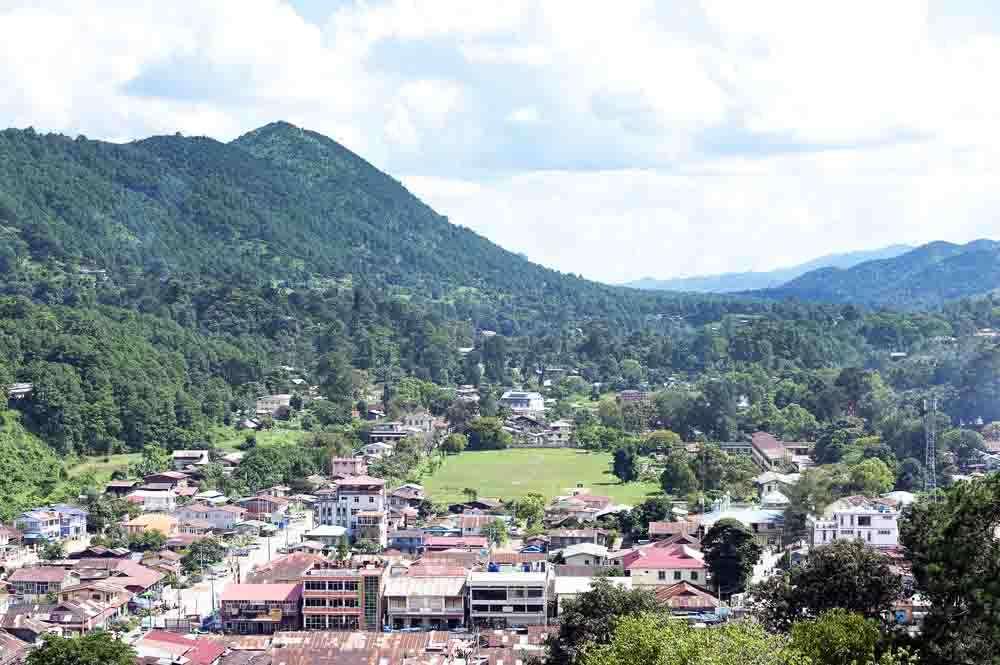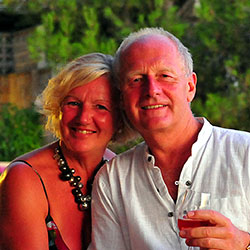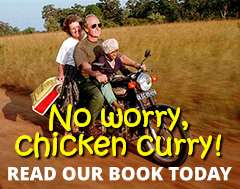This sleepy ponderous train ride gives us a sense of overall fulfillment when visiting the old British Burma colonial hill-station of Kalaw.
Boarding the train at Shwe Nyaung station, near Inle Lake, we’re struck immediately by the Spartan and somewhat grubby nature of the Upper Class carriages we’re to travel in.
The curtains look as if they’ve doubled up as cleaning cloths and the seats as footrests, so we’re under no illusion that we’ll leave the train as clean as we’ve boarded it.

The ride promises to be a three-hour chill, as the train will rarely exceed about 30 mph on the slow climb to Kalaw.
The benefit, as far as we can see, over simply driving to the old hill-station, is that we’ll get to see a great deal of rural landscape, agriculture and villages that we’d otherwise simply whisk through.
That said, even the short journey to the station has opened our eyes to the very simple life that the paddy workers live as they trundle to work on the back of a tractor trailer

With a toot, grind and a wheeze the train sets off. As I want to take pictures en route, I’ve selfishly monopolised seats on both sides of the relatively empty carriage.
Our only other companions are a contingent of Myanmar Army soldiers who spend most of their time playing cards on the floor of the gangway.

Spending my time alternating between sides of the carriage to take photos, I find that I’m usually, frustratingly, on the wrong side when an opportunity arises.
Our landscape gradually changes from the rice paddies of the Inle lowlands to more mixed farming with cotton, maize and sugar cane interspersed with small herds of cattle.

As its September, the countryside is lush and fertile, imparting a verdant green to every vista.
The slowly rocking train seems to draw the attention of locals who welcome the distraction from their labours in the fields and wave cheerily at no one in particular as the train passes.
There are only a three or four stops en route and as we pull into He Hoe station, ladies laden with impossible stacks of produce on their heads hawk their fayre along the length of the train during its brief stopover.
A colourful sign on the platform illustrates the do’s and don’ts of train travel; including romancing your girlfriend on the tracks or sleeping with your head on the rails!

We’re soon on our way again and the landscape changes again to a more rugged but still cultivated green and the train describes a sweeping loop, with the rail passing back over itself via a bridge, to increase altitude in the shortest distance possible.
Within a couple of hours we’re pulling into Aungpan and our guide suggests that we get off here and pick up our vehicle for the balance of the trip to Kalaw.

We’re a bit puzzled by this until he tells us that it will take about 25mins by car and another hour or so by train – and we’ll just be seeing more of the same.
Although this seems a bit of a cop-out, we’re tempted by the bustle and yells of the wholesale market that surrounds the station.

The rear freight carriages of our own train are hastily packed with tons of cabbages that are delivered by truck loose, topped and tailed and sacked-up on the platform, before being carried on shoulders to the freight carriages.

We wander out of the station and through the lively market. I have a limited attention span for markets the world over as they tend to be repetitious in their content. The Aungpan one differs by being a wholesale one and the sheer volume of goods, especially fruit and vegetables is quite impressive.
Lorry loads of cabbages pour into town seemingly precariously balanced but perfectly stacked in layers that defy the swaying of the trucks. Huge piles of ginger and other spices are crowed over by cockerels and chickens while lively banter is thrown back and forth across the busy streets.
The sheer colour and variety of this place makes it worthwhile having left the train.
We join our car and finish the uneventful climb up a well-made road to Kalaw.

Like most hill-stations in Asia that once held the administrative talent of the Empire in beautifully built properties reflecting the architecture of the European era, they’ve now been smothered by cheap featureless concrete edifices that add nothing to the ambiance of the towns.
If you’re interested in the colonial past of Kalaw then you have to look carefully to separate it from the all-encompassing architectural mediocrity that is quickly absorbing it.
Otherwise, it’s a busy, scruffy town set on a mountain top with great views in all directions. The British, certainly knew how to select their bases – generally in beautiful locations with best communications and in areas of the most equable climate within any country.

The Kalaw Heritage Hotel
There are some gems to be found with little bungalows tucked away in leafy gardens and the occasional hotel that reflects the more considered styles of times past. Two of note are the Kalaw Heritage Hotel, which has been completely restored and offers high-end luxury and comfort.

Pine Hill Resort
The other is Pine Hill Resort, which is more of a ‘Planters lodging’ with beautifully painted wooden bungalows and a more homely feel to it. Either would offer you a very pleasant stay in Kalaw.
We stop for lunch at Seven Sisters, another raised wooden colonial bungalow that is an amalgam of cosy wooden rooms clustered together with thirties furniture and decoration.
The delicious cooked-to-order food is a mix of local Shan, Indian, Chinese and Western and the service friendly, swift and personable.
We spend an enjoyable hour over lunch, chatting to the daughter of one of the ‘sisters’ who was once an air stewardess with Gulf Air.

Having wandered around the town, driven up into the highest viewpoint and back down to the railway station (this time just to see its old colonial style) we hop back into our car and head off to the airport at Heho for our flight back to Yangon.
The journey downhill affords some beautiful views across Heho Valley.

 Kalaw certainly offers another dimension to Myanmar – a sort of halfway history stop between its ancient temples and pagodas and the more modern cities that are fast developing.
Kalaw certainly offers another dimension to Myanmar – a sort of halfway history stop between its ancient temples and pagodas and the more modern cities that are fast developing.
Although Kalaw itself is not necessarily a ‘must see’ we leave it with the feeling that this rail excursion to it, for us, has been very much more about the journey than the destination; with the surrounding countryside and rural activities adding something special to our overall journey around the country.
If you’ve time, it’s worth taking the slow train to ‘nowhere’.

Click on the names if you’d like more information about the Kalaw Heritage Hotel, Pine Hill Resort or Seven Sisters restaurant.
If you’d like to combine Myanmar with your own adventure to anywhere in Southeast Asia, then why not ask us to arrange your own tailor-made travel – to immerse yourself in the wonders of this world?

 Let us plan your own inspiring journey to exotic climes
Let us plan your own inspiring journey to exotic climes
Why not download the TLC World guide brochure or give us a call today on 01202 030443, or simply click ‘enquire’ to submit your own personal itinerary request






























